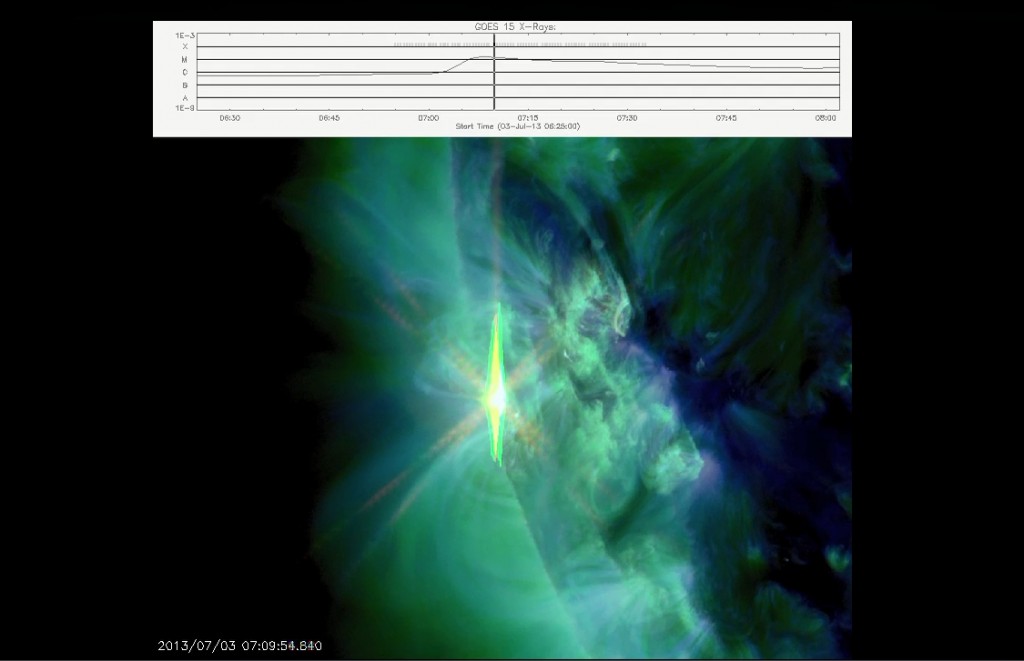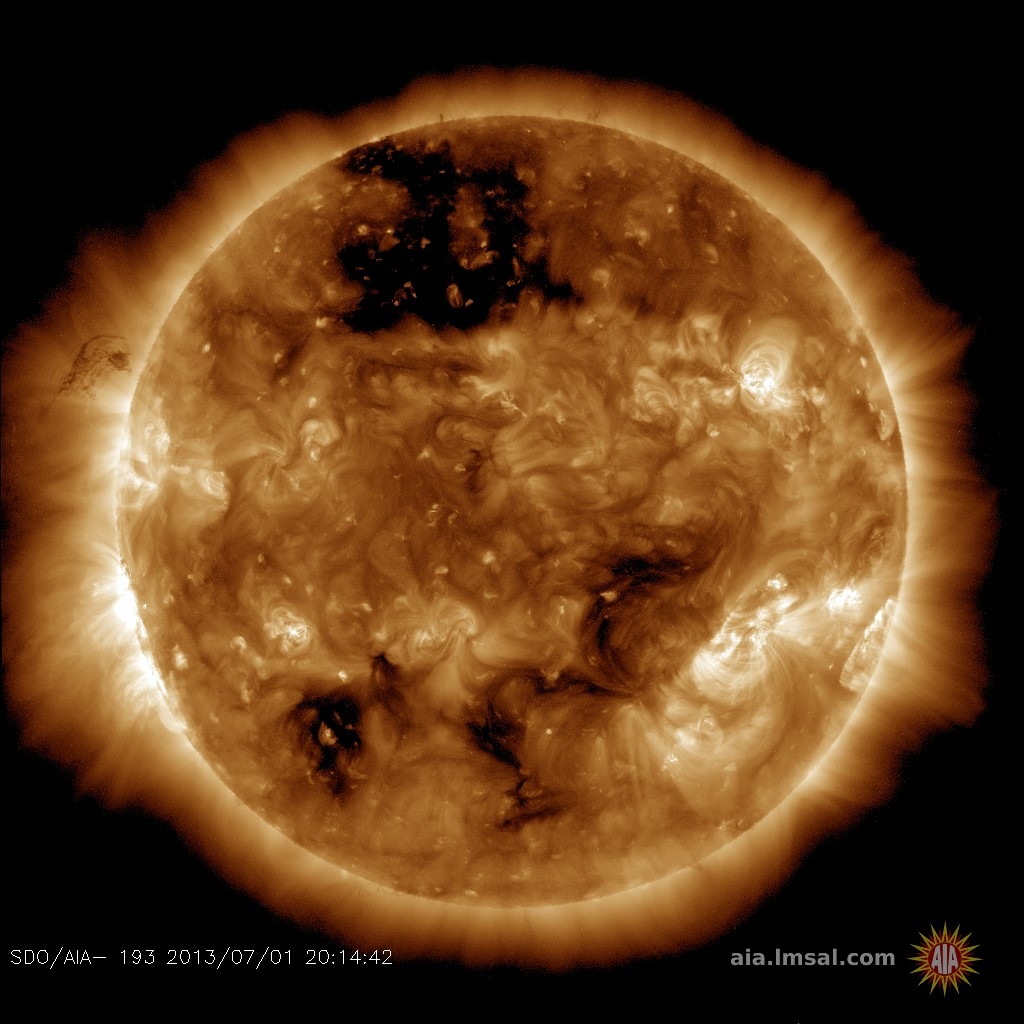The Sun has been acting out this week, with a July 1 solar prominence followed by a July 3 M-class flare. Both events were captured by the recently de-mascotted Solar Dynamics Observatory.

Extreme ultraviolet flash from the July 3 solar flare, as captured by Solar Dynamics Observatory with overlay from GOES-15’s x-ray recorder (Credits: NASA/Spaceweather.com).
Wednesday’s flare came from sunspot AR1785, which has a 40% chance of producing further M-class flares over the coming days. The M-class flare produced a non-Earthward facing coronal mass ejection (CME) and was followed a few hours later by a weaker C-class flare, which was also not geoeffective. Monday’s solar prominence, while spectacular, also had no effect on Earth systems.
In more solar fun, a massive coronal hole is spewing solar wind that may reach Earth July 6-7:

A massive coronal hole can be seen at the top of this solar image from SDO (Credits: NASA).
While it has been a relatively calm year for a solar max, with a sunspot number of 101, clearly our Sun has a little bit more showmanship to come.














































![A trajectory analysis that used a computational fluid dynamics approach to determine the likely position and velocity histories of the foam (Credits: NASA Ref [1] p61).](http://www.spacesafetymagazine.com/wp-content/uploads/2014/05/fluid-dynamics-trajectory-analysis-50x50.jpg)



Leave a Reply